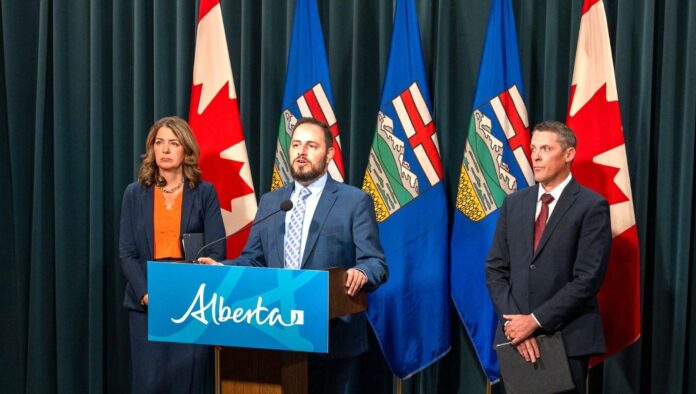EDMONTON — Teachers across Alberta walked off the job Monday, launching a provincewide strike that has shut down public, separate and francophone schools.
“Tomorrow, teachers across Alberta will rise together,” the Alberta Teachers’ Association said in its release Sunday. “Every teacher … will not go into work — not out of choice, but out of necessity. The time for excuses is over.”
The strike marks the first provincewide walkout by Alberta teachers in more than two decades, escalating a long-running dispute over education funding, class sizes and contract negotiations between the union and the provincial government.
In Sunday’s statement titled “Tomorrow, We Stand Together,” the association said the job action was not a choice but a necessity, citing what it called years of underfunding, overcrowded classrooms, declining supports and little meaningful dialogue with government. The union said the strike “did not have to happen” and described the walkout as a stand for the future of public education.
The province responded with a suite of measures aimed at easing the disruption for families and students.
“While I am disappointed by the ATA’s decision to strike, we remain focused on what matters most: our kids and their education,” Education Minister Demetrios Nicolaides said in a statement on Sept. 30. “The additional supports we are announcing will help families manage this disruption and give students access to learning opportunities during this difficult time.”
Province outlines temporary supports
Among the supports is a temporary boost to the child care subsidy for eligible children in Grades 1 to 6 attending full-time out-of-school care. After five days of strike, families may receive up to $644 for October, bringing the rate in line with summer levels.
To keep older students on track, the province will temporarily lift the annual 10-credit limit on distance education, allowing those in Grades 10 to 12 to take additional online courses. Families who enrol their children in a home education program supervised by an independent school may also claim up to 50 per cent of the home education grant, capped at $450.50 per child.
Parents and guardians are eligible for daily financial relief of $30 per student — up to $150 per week — while classes are cancelled. Children and youth 18 and under will also receive free admission to provincial museums and heritage sites, including the Royal Alberta Museum, the Royal Tyrrell Museum and Head-Smashed-In Buffalo Jump. The government said the initiative offers both recreation and learning opportunities during the labour dispute.
Arts, Culture and Status of Women Minister Tanya Fir said the free museum admission would help parents manage disruptions while giving children “meaningful learning experiences.”
The government has also pledged to explore extra support for students with complex needs during the strike.
For families, the closure of classrooms poses both financial and logistical challenges, particularly for parents who must find alternate care during work hours. Education advocates say the government’s supports may soften the blow for some, but access and eligibility could vary widely.
Students in rural or low-income households may struggle most to access distance learning or home-schooling resources. The province’s education website includes a toolkit for self-guided learning, but participation in home education would mean students are deregistered from their current schools — and re-entry is not guaranteed once classes resume.
The ATA’s action follows months of stalled contract talks. In its notice, the union said teachers’ wages have risen 5.75 per cent over the past decade while living costs have increased much faster. The government filed a complaint with the Alberta Labour Relations Board in mid-September, accusing the ATA of bad-faith bargaining. The board issued a consent order confirming both sides’ intent to keep negotiating.
The duration of the strike remains uncertain. Negotiations could resume at any time, but neither side has indicated when that might happen.
Parents are urged to monitor updates from their local school boards, the ATA and the provincial government. Information on child care subsidies, parent payments and learning resources is available at alberta.ca.




